Many years ago, I read a mind-bending book by Bill Bryson. But I did so a full decade after the best-selling author first wrote it. Surprisingly, I later learned that the book didn’t get as much coverage as his earlier travel books. “I gotta share this,” I said to myself. So I reached out to several newspaper editors with whom I worked with—none of which had covered the book—about doing a retrospective review. Their collective reply, “Sorry, we don’t review old books.”
In other words, modern journalism only touches recent “news,” however you define that. In art’s case, that usually means weeks or months, and typically never more than a few months old. Journalism, you see, is built on helping readers process the recent world—in many cases without context to our past. It’s almost as if they’re saying, “You’re on your own for anything good that’s older than a year, but we’ll help you find the good stuff coming out of the firehose right now.”
That’s negligent at best, narrow-minded at worst.
As journalists, how can we inform society if we fail to critique some of our “greatest hits” from the past? The answer is we can’t. While recent happenings have always been the focus of “news,” it shouldn’t come at the expense of celebrating, elevating, or criticizing some of humanity’s most viral ideas and works, especially for newer generations who weren’t around when that once important news dropped off the feed.
There must be a better way. While it’s impossible for news to cover everything that’s ever happened, that doesn’t mean it shouldn’t revisit the more profound ideas that are still relevant.
As a lover of both movies and journalism, these are my favorite cinematic combinations:
1. All The Presidents Men (the standard)
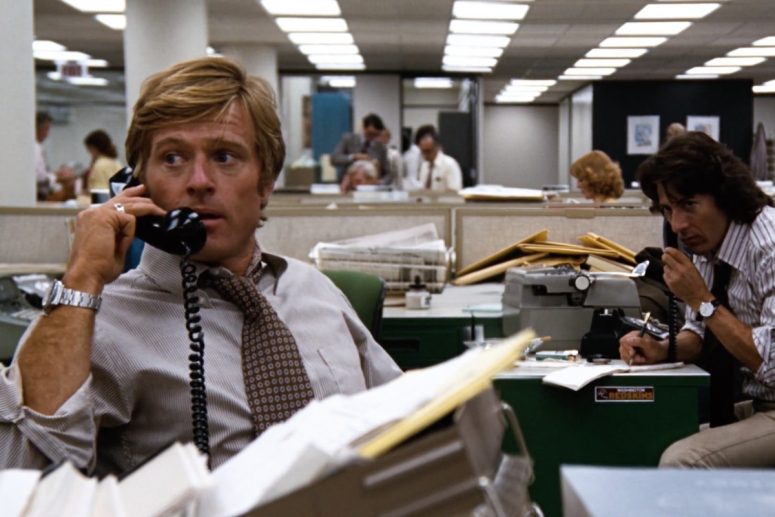
Continue reading…

Wikimedia Commons
I don’t like academic writing. It’s mostly nonsense.
A few years ago, I said as much to my father who works in academia. Despite my insensitivity and lack of tact, I stand by my belief. Not because I’m incapable of admitting when I’m wrong. But because academic writing’s verbose language, impersonal tone, and dispassionate delivery ultimately fail to engage readers.
In other words, “Academics are really good at writing books that only academics will read, but they’re not very good at making anyone outside of academia care,” says Jared Bauer, co-creator of Thug Notes, in an interview with Huffington Post. “Teaching isn’t easy, so I’m not trying to shame teachers for not trying more radical approaches to literature education,” he adds. “But at the very least, I hope (our) show makes teachers realize that a student won’t volunteer their attention. The teacher must seize it.”
As I debated with my father that day, for writing to succeed, it must capture the reader’s attention. If it doesn’t, the writing won’t get shared, influence can’t happen, and the opportunity to learn is squandered, even among scholars. There’s no point to that kind of writing other than to serve as a reminder of how not to write. Continue reading…
Many years ago, I subscribed to over 150 news feeds. I was a hard news journalist (aka tech blogger) at the time and believed I needed to monitor that many sources to perform my job.
 After realizing how much time I wasted on redundant news, I reduced that number to 30. A few years later, I cut my consumption again to just six daily outlets, before eventually settling on four per day for the last several years (one national outlet, one state, one city, and one long-read curator).
After realizing how much time I wasted on redundant news, I reduced that number to 30. A few years later, I cut my consumption again to just six daily outlets, before eventually settling on four per day for the last several years (one national outlet, one state, one city, and one long-read curator).
Since pandemic started, however, I noticed a disappointing trend: even the trustworthy sources I still read seemingly couldn’t look past the moving target that is coronavirus. They had become temporarily myopic, if not overly doomsday-ish, and were incapable of telling the whole truth (i.e. the world is getting much better).
In light of this, I cut my daily news in January to just two sources per weekday, one of which is delivered straight to my inbox. That source is the Need2Know newsletter, which summarizes what their editors deem as the 10 most important news updates every weekday. In just five minutes, I get smart summaries with a few smile-inducing comments from the Associated Press, New York Times, USA Today, and other specialist publications. (The other daily source I still follow is Digg’s Long Reads for in-depth reporting.)
After cutting my news to just two daily sources (note: I no longer read news on weekends as Need2Know alerts me on Monday of anything noteworthy), I went from spending on hour on news each day to no more than five minutes, minus the long reads I still reach for on my lunch break.
Like all previous instances that I dramatically reduced my news intake, I suspect I’ll be just fine this time, if not even prosper with the added hour the act afforded me.

I recently re-watched Top Gun with my children. This is what we thought of it: Radical!
As I always do with movies I love, I immediately headed to Wikipedia after the screening to soak up additional context. Turns out, the movie was inspired by this incredibly written article by Ehud Yonay in California Magazine. First published in 1983, Yonay tells the story of two pilots named “Yogi” and “Possum” and how they navigate “Top Gun,” along with two excellent sidebar stories about taking a flight in an F-5 and how to fly one.
“When I climbed out of the cockpit at the end of our hourlong flight, I couldn’t even swagger,” Yonay writes. “Every muscle in my body ached, I was exhausted and slightly nauseated, and all I wanted to do was go to sleep. But they tell me the first time is the worst, and I can’t wait to get up there again.”
FUN FACT: Top Gun has since moved to Fallon, Nevada. My family visited it several years ago on a press trip and were floored by the air maneuvers (or “hops” as they used to say). Looked like something out of Inception—jets flying straight up and down at speeds I’ve never seen before!
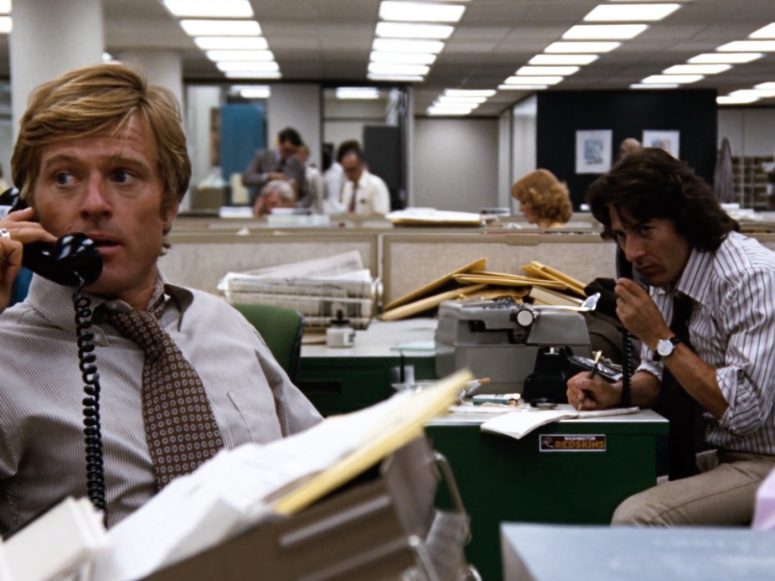
As a working, independent journalist for over 15 years now, I can attest that there is, in fact, a liberal bias in the media. In fact, 37% of journalists identify as liberal, while just 7% as conservative, according to the Washington Post. The rest, myself included, are independent.
Having written for dozens of moderate outlets such as CNN and even Fox News and MSNBC—the most extreme publications for American news bias—I also have a lot of insight into why that is. Here’s why. Continue reading…

Courtesy Shutterstock
I start many of my conversations with the following: “I read an interesting article recently…” This week my twelve-year old daughter asked, “Dad, where do you read all these articles you’re talking about?”
Good question. In essence, she was asking how I stay informed and uncover a lot of interesting information and in-depth news. This is what I told her:
- I read three daily newspapers. They are: USA Today (for national news) and KSL and Daily Herald (for local news). I only scan the homepages and click on headlines that interest me. I sometimes skip weekends and weekdays on extra busy days. All told, I might spend 10-20 minutes reading these. I rarely read politics.
- I read Digg’s daily long reads. These are editor picks of some of the best long-form journalism and magazine articles on the web, from a variety of outlets. I stockpile them in several open tabs on my phone and read them throughout the week, spending a few hours doing so.
- I subscribe to weekly long read newsletters. They are the Weekly Top 5 Longreads and Longform’s Pick of The Week. Like Digg Longreads, I stockpile these and spend a few hours reading them each week.
On top of that, I read about 8-10 books a year, mostly non-fiction and biographies.
Fun fact: I used to spend a lot more time staying informed and reading dozens of websites and online newspapers in my twenties but have found since my thirties that the added distraction didn’t justify the amount of time I was spending. Since then, I’ve been a lot more productive and happy while still staying just as informed on the low-caloric, but nutrient-rich diet of the above.
Hope that helps.
 I recently read a thought-provoking essay by James Pogue on the rise of long-form articles that are later optioned into feature films and narrative-driven books, sometimes to the tune of several million dollars, as was the case with Argo, a movie that was based on a previously published Wired article.
I recently read a thought-provoking essay by James Pogue on the rise of long-form articles that are later optioned into feature films and narrative-driven books, sometimes to the tune of several million dollars, as was the case with Argo, a movie that was based on a previously published Wired article.
As Pogue seemingly sees it, this new economy of article-to-film adaptations turns previously idyllic literature into modern day “trash,” which is as harsh as it is inaccurate. For example, Say Nothing, a book written by the New Yorker’s Patrick Keefe and based on his previously published articles, is hardly trash for soon becoming a TV series. In fact, the book is phenomenal and proof that great authors and their stories deserve to be told across as many mediums and adaptations as possible, in an effort to reach as many people as possible—even ones that don’t like to read books or long-form articles.
On the whole, it seems like Pogue is just bemoaning change. Continue reading…

Courtesy New York Times

Shutterstock
As seen on Long Reads, Digg, and my own web browsing:
- Is more democracy always better democracy? Yes, argues The New Yorker, especially since party primaries determine the leading candidates.
- What happens when notoriety kills something? Here’s your answer in a terrific story titled I found the best burger in the country, then I killed it.
- Missing the story. Rebuilding public trust starts by including more voices in the media and diversifying (or at least offering empathy training) to mostly white newsrooms, argues The Columbia Journalism Review.
- Believing without evidence is always morally wrong. Or so convincingly argues Aeon.
- Inside the booming business of background music. Why retailers and sports teams are spending big money on music design, according to The Guardian.
- Why saving the world is crazy hard. According to a hard-to-read personal account of third-world atrocities by The Walrus.
- How $3000 elite teams are killing youth sports in America. Expensive travel leagues siphon off talented young athletes and leave everyone else behind, reports The Atlantic. (Which is partly why my wife is starting a non-profit competitive league next year—go Lindsey!)
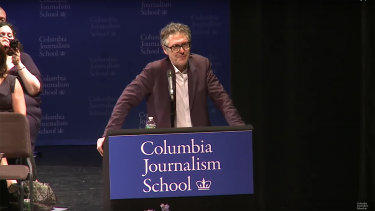 Here’s how “This American Life” listeners recently reacted after the podcast interviewed a right-wing student who was berated to tears by a left-wing teacher who didn’t think right-wing ideas deserved a voice on campus:
Here’s how “This American Life” listeners recently reacted after the podcast interviewed a right-wing student who was berated to tears by a left-wing teacher who didn’t think right-wing ideas deserved a voice on campus:
I don’t even want to listen to this bullshit. I’m so sick of [you] highlighting the right. You don’t have to give equal airtime to stupidity just because stupidity took the office.
Thanks for giving voice to a fascist organization. I’m out.
So many pieces about how we “elite” liberals just don’t understand conservatives.
I understand them just fine. They’re usually racist, don’t “believe” in science or facts. I’ve had enough of these kinds of “but what about the poor conservatives?” pieces.
Honestly, I’m getting a little tired of This American Life’s fixation on conservatives. I really have no interest in them or their feelings.
“This intolerance to even listen to someone else, that’s new among our audience,” says journalist Ira Glass in his excellent commencement speech on the rise of fake news and extremely divisive audiences. He went on to call the reaction “dispiriting.”
I completely agree and would only add that an unwillingness to listen to opposing ideas, even hateful ones, is as tyrannical at it is radical, ignorant, and fearful.
Long live the first-amendment.
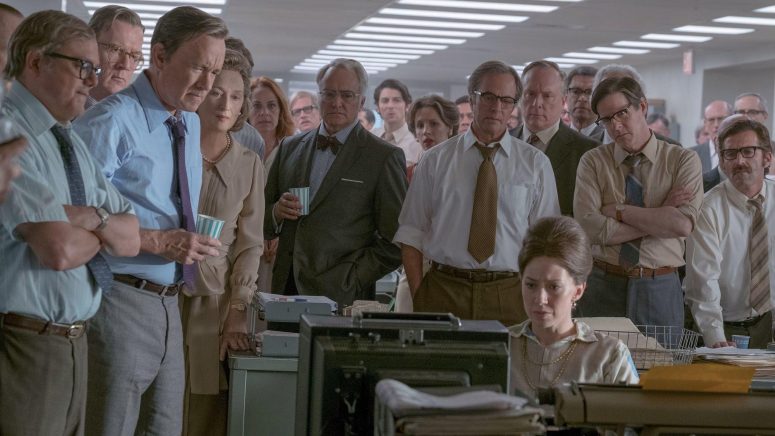
My wife and I watched the critically-acclaimed The Post recently at our local theater.
Directed by Steven Spielberg and starring Tom Hanks and Meryl Streep, the movie is about how The Washington Post, namely its brave publisher Katharine Graham, decided to publish the controversial Pentagon Papers in 1961.
Although the movie kept me engaged with strong acting, tight tension, and fun twists, I deem it good but not great. Here’s why: Continue reading…

Credentialed “journalist” Blake Snow playing Wii for fist time on May 10, 2006 / photo by Ryan Block
I’m a writer. At least that’s what I say whenever I’m asked what I do for work. Continue reading…

As someone who’s written hundreds of articles for fancy publications, I’m often asked the best way to land free publicity.
Outside of knowing when you have truly have something that’s noteworthy and knowing which audiences are most likely to find your something relevant, my colleague Josh Steimle recently wrote about the subject for Entrepreneur; specifically how to get great PR in 15 minutes per day.
Josh was kind enough to interview and quote me in the article. This is what I said: “Indirect PR pitches are the best way to increase your chances of a media placement. Rather than talking about yourself, explain a larger trend that might interest the journalist or publication you’re pitching, complete with stats, anecdotes and data.
“Your contribution should be only part of the story. Doing so not only makes the press’s job easier but demonstrates greater objectivity, further increasing your chances of a placement.”
In my experience as someone being pitched, that approach leads to a lot more placements.
Since we’re on the subject, now go watch Ace in the Hole, All The Presidents Men, State of Play, and Spotlight—all good if not remarkable movies on journalism.

Lucasfilm
Take these. If you’re interested in journalism, the art of war, Star Wars, business, and/or are “white,” I think you’ll enjoy them:
- Access denied. In light of waning press access because celebrities, politicians, newsmakers, and producers now take their scoops and audiences directly to social media (instead of publications), we must “build a new independent media on a bedrock of explaining and celebration and condemnation,” writes John Herrman. Explainers, for instance, “assert authority without invoking expertise; they mimic the language of their audience; they offer closure and satisfaction in an endless stream.”
- Why it’s hard to win the war on terrorism. “War is so much easier when both sides are wearing uniforms,” writes Richard White.
- The first-world problem of being white. “What my son was expressing — that he wants the comfort of what he has but that he is uncomfortable with how he came to have it — is one conundrum of whiteness,” writes Eula Biss.
- Sneaky ways businesses trick consumers. Why that restaurant you used to love is no longer good among other things by Daniele Kline (i.e. cheaper ingredients slowly make their way into popular products).
- Star Wars strikes back. By Brian Hiatt. “The phrase that I used in front of, like, 5,000 Star Wars fans pumped to the gills, ready to see the trailer, was ‘It’s only a movie,'” Hamil says. “I was trying to appeal to the rational, sane people who know movies don’t really change your life, and if you really think we can make you feel like you’re 10 years old at 38, you know what’s gonna happen. So just don’t think that and you’ll be fine!”

Blake Snow
There’s a funny saying in journalism. You could publish the biggest exclusive story in the world — a major political scandal, military coup, celebrity scoop, scientific breakthrough, or life-changing event. But it still won’t reach as many people as a cute story about a dog (See also: The AP Guide to News & Feature Writing).
I was reminded of this recently while walking my dog. Although I’ve walked the block many times with my adorable toddlers, one neighbor in particular never took much notice when crossing paths. No biggie. I just thought she was a private but pleasant lady. She’d smile; sometimes wave. We waved back. That was the extent of it for nearly four years.
Until she met Harley. Continue reading…
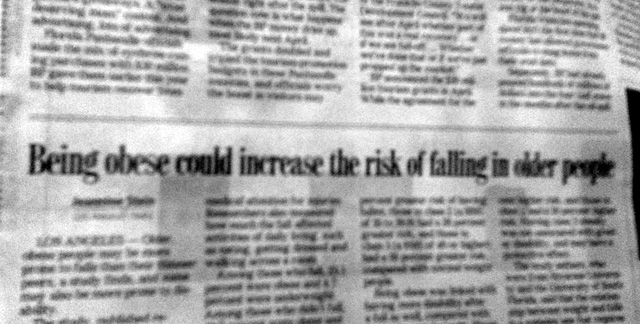
As seen in my local newspaper (which I re-upped, btw). Yes, the story, based on a university study, is as dumb as it’s headlined. In sum: Human body wasn’t meant to balance nor support excessive pounds for prolonged periods of time. May fall as a result. Go figure.
Now before any dreamy eyed Obama voters get offended by the timing of this, I’m in no way calling our nascent President a failure. I’m still hopeful. But as an American, I want answers, which is what good reporting should be seeking anyway. So why haven’t these questions been asked (or maybe I missed them)? Continue reading…
Time Magazine is wrong.
As newspapers — and by extension 80% of all original reporting — face extinction, along with print, the magazine says websites should charge $.10/day or $2/month to access the news. Author Walter Isaacson says this will offset the loss of subscription and classified revenue so creative journalists can still “get paid” in addition to advertising, which isn’t performing well online.
As a freelance journalist, nothing would please me more than getting better pay for the work I do. But I think Isaacson is off the mark — people will never pay for commodity information online (remember the failed “paid” content idea?). If network TV news can survive (while some even thrive) on advertising alone, why can’t websites? Isn’t the idea to stay lean and mean and choose your reporting battles, which can be expensive (say… stationing a full-time journalist in Iraq like the LA Times does on its constituents’ dime)?
Anyone got any ideas? Otherwise, our ability to watch guard government, corporations, and the public through journalism could be compromised.
Economist.com — “Pick almost any American newspaper company and you can tell a similar story. The ABC reported that for the 530 biggest dailies, average circulation in the past six months was 3.6% lower than in the same period a year earlier; for Sunday papers, it was 4.6% lower. Ad revenues are plunging across the board…”
Fact: many technologists were quick to predict the death of pen and paper with the rise of typewriters and personal computers. Similarly, many technologists predicted book sales would decrease with the rise of e-book readers.
That being said, older technology can often persist in light of new technology through adaptation (i.e. new technology does not always obviate older technology). I believe the same is true for newspapers and magazines, provided they accentuate their remaining value (portable text, reputation, local community, and/or more non-ephemeral reporting like features).
[via Digg]
“Not all 🙂 as informal writing creeps into teen assignments,” reads a clever AP headline. Here’s an excerpt:
It’s nothing to LOL about: Despite best efforts to keep school writing assignments formal, two-thirds of teens admit in a survey that emoticons and other informal styles have crept in… “It’s a teachable moment,” said Amanda Lenhart, senior research specialist at Pew. “If you find that in a child’s or student’s writing, that’s an opportunity to address the differences between formal and informal writing. They learn to make the distinction … just as they learn not to use slang terms in formal writing.”
First of all, I love how avant guard the Associated Press was in using that playful headline in a formal news report. Secondly, I whole heartily agree that there’s a time and a place for informality. That goes for speech as well.
Blake Snow examines gaming benevolence and creative development twice monthly. The color of next-gen is bright.
In 2007, a fictional food critic by the name of Antone Ego aptly described mass media and its audience when he wrote: “We thrive on negative criticism, which is fun to write and to read.”
Ego’s definition couldn’t have been wiser. Indeed, positive news has long since taken a backseat to negative reporting, with the former often compressed to a 20-second closing spot in a 30-minute telecast.
The same is true of videogames, if not by more, which have long been vilified and blamed for idleness, poor grades, insensitivity and random acts of violence by the mainstream media. Interestingly, even the gaming press has become more grumpy in recent years, adding drama where there is none to be found, discouraging industry growth and change, and forgetting the playful nature of videogames altogether.
Continue reading at Crispy Gamer…
I’ve had several discussions this past week on the best way to interview someone in the name of journalism. Here are my thoughts, methodologies, and best practices when trying to extract pertinent information from key individuals.
-
Realize you’re interviewing a human being with feelings. It’s imperative that you are courteous and respectful even if you completely disagree with the person or they have a tendency to spin everything (spin frustrates accurate information, so that can be discouraging, I know).
-
Ask straightforward questions without context when possible, e.g. “Why did X happen?” as oppossed to “Given blah, blah, blah, and yada, yada, yada, why did X happen?” When you must use context, be sure to be as objective as possible when prepping the question.
-
Be fair. I know an individual that walked straight up to a Sony executive and asked him outright if the executive thought his employer was arrogant. The executive scoffed at the question and immediately walked away leaving the reporter with nothing more than an eye roll to report on. Bad idea. Bad approach. And definitely not fair. Even if someone shows heavy signs of what you’d like to reveal, you have to come at those questions sideways like, “What do you think about X?” in which the interviewee will most likely make known your hypothesis to be true.
-
No hints! When reporting, please don’t drop sparky hints. You’re readers aren’t retarded, and collectively they are much smarter than you. When it comes to straight news, just report what happened piecing together the story in chronological order while distilling information in inverted pyramid form so readers can ditch a story when they like.
-
View the interviewee as an asset. Remember that the interviewee has information you want access to. Use tact in getting said information so your audience can make an informed decision.
Anyone else have thoughts on interviewing for information? Comment if you got ’em.
Game journalism sometimes gets a bad rap, but many of the worst accusations aren’t based in reality. Here are eight of the most popular myths about game reporting…and what really happens behind the scenes.
8. Video game journalists aren’t as responsible as traditional media.
Conventional wisdom suggests that most gaming journalists are uninspired, inconsistent, overly sensationalistic, or even fail to fact check before running a story. While some outlets are more irresponsible than others, this isn’t the case across the board. Game journalism didn’t get where it is today by being inaccurate and irresponsible. Additionally, widespread video game coverage has existed no longer than 20 years since the late 80s. While the media is anything but nascent, it still has its growing pains. Was the mainstream media as reliable as they are today? Not likely. This same is true of video game journalists.
The Verdict: It depends on the publication and the reporter, but more often than not, game journalists are right up there with most media in terms of credibility.
Continue reading at GamePro…
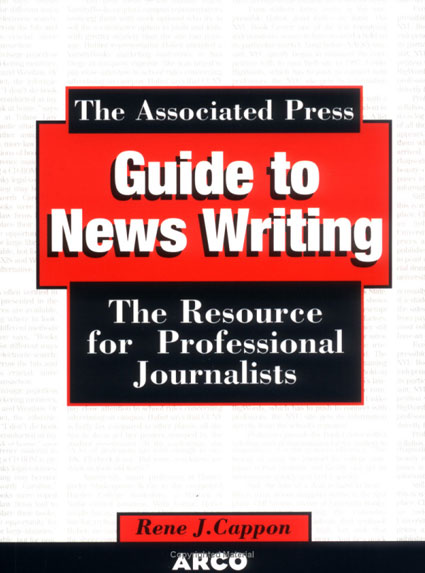 Write a lot. Then buy this book. Or vice versa.
Write a lot. Then buy this book. Or vice versa.
Don’t let the name mislead you—The AP Guide to News Writing will help you become a better writer of everything except maybe books. This quick and worthwhile read is full of helpful tips, professional counsel, and practical ways to further flex your prose.
Continue reading…
Ryan from Invisible Inkling has such a good take on the waning popularity of newspapers and how new media has changed the game for the better. Without stealing his thunder, here are his major points:
- It’s not Google’s fault
- It’s not Craigslist’s fault
- Write local
- Get new training
- Stop charging for news (only advertising)
- Reporters need to be multimedia enabled, not just writers
- Use bloggers as network sources and voices, don’t fear them
- Let your readers consum your content in a variety of ways
- Embrace new media
- Revamp your online vision
Be sure to click on through to read his excellent commentary.
In an article entitled “Do Newspapers Have a Future,” author Michael Kinsley at TIME magazine had this to say: “Meanwhile, there is the blog terror: people are getting their understanding of the world from random lunatics riffing in their underwear, rather than professional journalists with standards and passports.”
He’s got a point. However, he also exposes the overall threatened view of traditional media towards bloggers, and rightfully so. Continue reading…
Okay, this might be somewhat of a dated topic, but should biased, opinionated web loggers enjoy the same protection as so called “non-biased, but they really are biased” journalists? Apple Computer seems to think not in wake of their recent litigation against bloggers who got the computer company ruffled when they took the steam out of their new ipods and imacs.
Let me know your thoughts on this one… Do bloggers deserved to be treated as new amateur journalists of the new era? As for me, it is yet to be determined. (Sara, this goes for you too!)
“PFG – pretty freakin good”
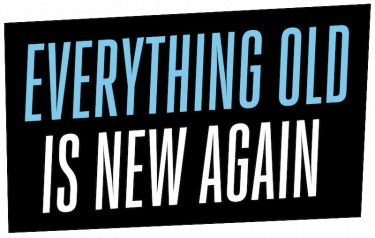







 I recently read a
I recently read a 

 Here’s how “This American Life” listeners recently reacted after the podcast interviewed a right-wing student who was berated to tears by a left-wing teacher who didn’t think right-wing ideas deserved a voice on campus:
Here’s how “This American Life” listeners recently reacted after the podcast interviewed a right-wing student who was berated to tears by a left-wing teacher who didn’t think right-wing ideas deserved a voice on campus:





